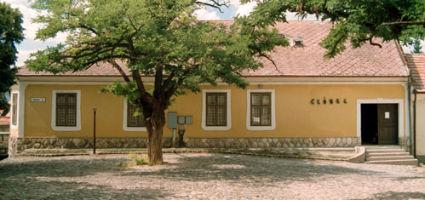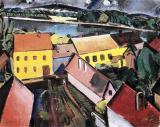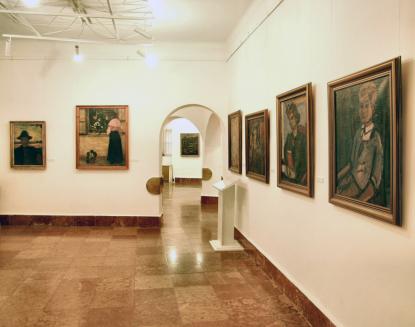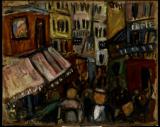2024. April 23. Tuesday
Ferenczy Museum Center - Czóbel Museum - Szentendre
 |
Address: 2000, Szentendre Templom tér 1.
Phone number: (20) 779-6657
E-mail: info@muzeumicentrum.hu
Opening hours: Thu-Sun 10-18
|
Béla Czóbel (1883-1976) is the first painter who was provided with an independent museum in his lifetime, at age 92, in a one storey building on the castle hill of Szentendre. The building was originally a Catholic boy school. When converted into a museum, the facade of the building was left unchanged and six wards opening into each other were formed inside. The museum opened on the Summer of 1975. It was enlarged on the 100th anniversary of the birth of the artist.
In the ward on the upper floor paintings painted in similar style from abroad are placed on the walls in chronological order until the year of 1940. The Czóbel lived and worked as a mature artist between 1940 and 1966 in Szentendre and in 1966-67 in Budapest. The selection of portraits, still lives and landscapes are from that period.
A chamber exhibition series began in December, 2003 titled 'The Works of Béla Czóbel in the Mirror of Genres.' It is a collection of the nudes made in the last decade (1966-76) of the life of the artist. Our museum has eighteen of them.
The new part of the exhibition is the chronological table that shows the locations of the life of the artist. The analyses of the works of the most important works in both English and Hungarian with sketches are placed on desks. The tables also show that in the works of the artist mainly known as a colorist the composition structure was just as important.
In the ward on the upper floor paintings painted in similar style from abroad are placed on the walls in chronological order until the year of 1940. The Czóbel lived and worked as a mature artist between 1940 and 1966 in Szentendre and in 1966-67 in Budapest. The selection of portraits, still lives and landscapes are from that period.
A chamber exhibition series began in December, 2003 titled 'The Works of Béla Czóbel in the Mirror of Genres.' It is a collection of the nudes made in the last decade (1966-76) of the life of the artist. Our museum has eighteen of them.
The new part of the exhibition is the chronological table that shows the locations of the life of the artist. The analyses of the works of the most important works in both English and Hungarian with sketches are placed on desks. The tables also show that in the works of the artist mainly known as a colorist the composition structure was just as important.


